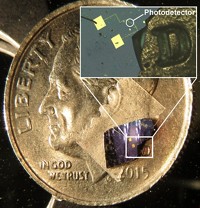Advertisement
Grab your lab coat. Let's get started
Welcome!
Welcome!
Create an account below to get 6 C&EN articles per month, receive newsletters and more - all free.
It seems this is your first time logging in online. Please enter the following information to continue.
As an ACS member you automatically get access to this site. All we need is few more details to create your reading experience.
Not you? Sign in with a different account.
Not you? Sign in with a different account.
ERROR 1
ERROR 1
ERROR 2
ERROR 2
ERROR 2
ERROR 2
ERROR 2
Password and Confirm password must match.
If you have an ACS member number, please enter it here so we can link this account to your membership. (optional)
ERROR 2
ACS values your privacy. By submitting your information, you are gaining access to C&EN and subscribing to our weekly newsletter. We use the information you provide to make your reading experience better, and we will never sell your data to third party members.
Materials
A Tunable Semiconductor
Bilayer graphene has controllable bandgap
by Elizabeth K. Wilson
June 15, 2009
| A version of this story appeared in
Volume 87, Issue 24
The electronic properties of graphene—a single layer of carbon atoms configured like chicken wire—are compelling enough. But now, researchers say, by connecting two layers of graphene, they have achieved what could be an extraordinary breakthrough in electronics: a device with a tunable bandgap.
The defining property of any semiconductor or insulating material is the size of its bandgap—the amount of energy between the material's valence band and conduction band. This intrinsic, fixed characteristic determines the material's ability to transport electrons or absorb photons and thus what role it can play in devices such as transistors and photodiodes.
University of California, Berkeley, physics professor Feng Wang and colleagues report that by placing two sheets of graphene on top of each other and putting the layers between two electrical gates, they are able to adjust the bandgap by changing the applied voltage (Nature 2009, 459, 820).
Researchers had predicted the potential for a tunable bandgap in bilayer graphene and have been intensely interested in the implications of this type of material for flexible nanoelectronic and nanophotonic devices. But efforts to fabricate such a device hadn't been successful, and some researchers had been skeptical about whether such devices could be created at all.
Dirk van der Marel, materials science professor at the University of Geneva, says the report "looks like a very beautiful paper," adding that tunable bandgaps offer innovative ways of manipulating electrical transport properties in devices.
Since its discovery in 2004, graphene has grabbed much attention (C&EN, March 2, page 14). The material's single, incredibly strong sheets appear to conduct electrons almost effortlessly, and researchers are expending considerable effort to learn how to synthesize it more easily. On the horizon are graphene-based transistors, frequency multipliers, and light-emitting diodes.
The Wang group's work on bilayer graphene may lay the foundation for a new direction in graphene research—giving scientists a chance to double their fun.






Join the conversation
Contact the reporter
Submit a Letter to the Editor for publication
Engage with us on Twitter